[NB: This text was first published by Drunken Boat #24, April 2017, in its Outranspo folio]
A. Translation procedures affecting directly the source-text or the target-text
B. Translation procedures affecting the apparatus, protocols or goals of translation
Translation procedures affecting the choice of the source-text
Translation procedures affecting the choice of the target-language(s) of the translation
Translation procedure affecting the conditions of production of the translation
-
Translation procedures affecting the protocols of translation
-
Translation procedures affecting the expected outcomes of the translation

01- Soundtranslation
(span: sonotraducción; fr: sonotraduction)
- Def.: a translation that transliterates or transcribes the sound or the orthography of the words of the source-text using words in target language that may or may not have a relationship to the meanings carried by the source-text. The former case we call a Zukofskian soundtranslation, the latter one a VanRootenian soundtranslation. Also known as “traducson” [G.Genette, Palimpsestes. La littérature au second degré, éd. du Seuil, 1982] and “traduction homophonique” [Oulipo, Atlas de littérature potentielle, Gallimard, 1981, p. 144].
Example. Source-text: “Quid est, Catulle ! Quid moraris emori ?” (Catullus, poem LII)
– Zukofskian soundtranslation: “Quick death, Catullus, what more horror may hurry!” (CATULLUS (GAI VALERI CATULLI VERONENSIS LIBER), translated by par Celia and Louis Zukofsky, Cape Goliard Press, 1969, poem 52).
– VanRootenian soundtranslation: “Cuit d’Est / Qu’as-tu, lait / Cuit d’amour / A riz et morilles ?” (Marcel Bénabou, Change, 19, Seghers/Lafont, 1974, p. 130) .

02- Microtranslation
(span: microtraducción; fr: microtraduction)
- Def.: a translation that decomposes words of a source-text into selective meaningful units, and then translate the meaning of these smaller units.
Example. Source-text: “A thing of beauty is a joy for ever.” — Target-text: “Une chose de beau thé est une joie pour toujours.”
Example. Source-text: “d’une étoile” — target-text : “of its web” (Outranspo, “Renga O”).

03- Rebuslation
(span: rebuccíon; fr: rébuction)
- Def.: a translation that decomposes ALL the syllables of a source word into smaller meaningful units (like a rebus does) and then translates this smaller meaningful units according to their meaning. It is equivalent to a systematic and absolute microtranslation of a text.
Example. Source-text: “cinéma” — target-text : “saw nose mast”.
Example. Source-texte : “Joyeux anniversaire Lily” — target text : “Cheek goose eyes donkey winter deer bed bed.”
Example. Source-text: “injustement disgracieux” — target-text: “in fair lies say fat skies.”

04- Macrotranslation
(span : macrotraducción; fr : macrotraduction)
- Def.: a translation that concatenates the words of the source-text into larger meaningful units, and then translate the meaning these concatenated units.
Example. Source-text : “[…] par le […]” — target text “[…] habla […]”.

05- Transdeduction
(span : transdeducción; fr : transdéduction)
- Def.: When you translate a word as if it were an acronym, using letters or pairs of letters, resulting in a sentence in a different language which in some way semantically defines the word. Original idea by anticipatory plagiarist Desdouitz de Saint-Mars (“Desdouitz de Saint-Mars, le premier en date des philologues « aberrants » du XIXe siècle, utilisait une méthode assez complexe; il voyait dans chaque lettre d’un mot français l’initial d’un mot anglais, la phrase anglaise ainsi obtenue devant définir le vocable français. » Pour Saint-Mars, il s’agissait de « remonter jusqu’à la source des mots et des noms. » Saint-Mars, Desdouitz de. Essai d’un dictionnaire d’étymologies gauloises divisés en trois parties, 2e édition, Rouen, s.d., p. VII-IX. Cited in Raymond Queneau, Aux Confins des Ténèbres – Les Fous Littéraires. Ed. Madeleine Velguth. Paris: Gallimard, 2002. Pg. 201-3.).
Example. “Combien ne nous a-t-on pas débité que celle du nom de NORMAND était Nord-man, homme du Nord? Et l’on a eu la bonté de prendre cette traduction pour une Étymologie qu’elle n’est pas et qu’elle ne serait être puisqu’elle ne définit ni le mot North, ni celui de man, dont il est plus que probable qu’aucun des citateurs n’a connu l’origine ni su la signification. Nipping of region the mindful animal, N-O-R-T-H-M-A-N signifient l’homme ou l’animal raisonnable des pays froids. […] En voici la preuve, que je crois devoir faire précéder des Étymologies des mots Fleuve, Rivière, et Montagne. Flowing every vast end. F-L-EU-V-E expriment tout grand bout de courant. […] Rise with every end. RI-VI-ÈR-E, signifient un bout de source. Masse one tapering needs, M-ON-TAG-NE disent un bloc, une masse se terminant nécessairement en pointe […]. Le RHÔNE est le plus rapide de nos fleuves, la Saône le plus lent, la Loire le plus long. River hasty one end, R-H-ÔN-E signifient un rapide bout de rivière. Spring heavy one end, S-A-ÔN-E expriment un lent bout de source. Long of it river end, L-O-I-R-E disent le long bout de rivière, etc., etc. [RQ 2002, 202-203].
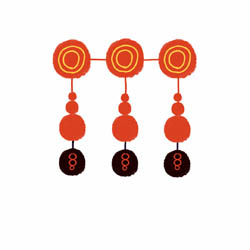
06- Paleotranslation
(span: paleotraducción; fr: paléotraduction)
- Def.: a translation that translates the etymological roots of the words of the source-text. A. Berman calls it an etymologyzing translation.
Example. Source-text: “A thing of beauty is a joy for ever.” — Target-text: “Une affaire de charme est un plaisir pour toujours.”
Example. Source-text: “καλχαίνω” — target text : “ein rottes Wort zu färben”. The Greek verb actually signifies ‘to darken’, but Hölderlin’s translation reactivates the idea of color present in the etymological root of the verb (Hölderlin translating Sophocles, quoted in A. Berman, La Traduction et la lettre ou L’Auberge du lointain, Le Seuil, 1999, p.90).

07- Hommeauxtranslation
(span: hommeauxtraducción; fr: hommeauxtraduction)
- Def.: a translation that translates the homonyms or homophones of words of the source-text.
Example. Source-text: “Il danse, rue puis se lance dans l’air […] — target-text: “He dances, he streets and spears in the aria […] “ (Outranspo, “Renga O”). “streets” translates “rue”, a French homonym of the original verb “ruer” (to kick); “spears” translates “lance”, a French homonym of the original verb “lancer” (to throw); “aria” translates “air”, a French homonym of the original “air” (the air).
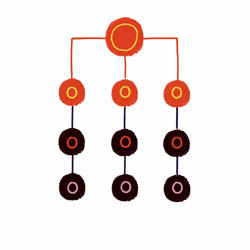
08- Morphotranslation
(span: morfotraducción ; fr: morphotraduction)
- Def.: a translation that translates the meaning of each morphological units of every word.
Example. Source-text: “injustement disgracieux” — Target-text: “No justo femenino modo sin gracia plural.”
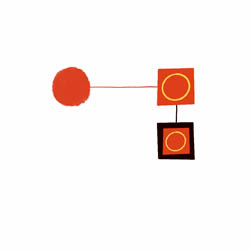
09- Antotranslation
(span: antotraducción; fr: antotraduction)
- Def.: a translation that translates the antonyms of words of the source-text.
Example. Source-text: “A thing of beauty is a joy for ever.” — Target-text: “Un rien de laideur n’est pas une misère un instant.”
Example. Source-text: “Danza el antro entre las lenguas del olvido del lugar […]” — target-text: “A dance without language in a time you know all too well” (Outranspo, “Renga O”).

10- Exotranslation
(span: exotraducción; fr: exotraduction)
- Def.: a translation that paraphrases extensively the translated meaning of the source-text.
Example. Source-text: “Ou au bord de la piscine, ou dedans […]” — target-text: “Or esle (option C) in the thick wetness of the artificially blue basin where we occasionally swim (even Pablo!) / Or else (option B) on the edge where badkrukas sit, […]” (Outranspo, “Renga O”).

11- Limentranslation
(span: limentraducción; fr: limentraduction )
- Def.: (invented by Ermanno Cavazzoni) to translate using the extreme limit of the word’s meaning.
Example. Source-text: “A thing of beauty is a joy for ever.” — Target-text: “Un gadget symétrique est une fête invariable.”
Example: “dux” in latin is usually translated with “duce” in Italian. To translate with “colonel” instead. Draws the text towards a new cultural field

12- Endotranslation
(span: endotraducción; fr: endotraduction)
- Def.: a translation that summarizes the translated meaning of the source-text.
Example. Source-text: “A thing of beauty is a joy for ever.” — Target-text: “Le beau dure.”

13- Ekphrasotranslation
(span: écfrasotraducción; fr: ekphrasotraduction)
- Def.: translation that replaces a word or expression by a description.
Example : Source-text “pièce de 10 centimes” — Target-text : “a yellow coin”.
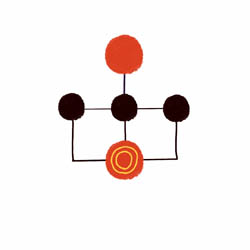
14- Scholiotranslation
(span: escoliotraducción; fr: scholiotraduction)
- Def.: A translation that described something that happened in the original.
Example. Source-text: “A thing of beauty is a joy for ever.” — Target-text: “Un pentamètre fameux de Keats sur la pérénnité des objets esthétiques.”

15- Gendertranslation
(span : génerotraducción; fr: genrotraduction)
- Def.: a translation that chooses the grammatical gender of nouns of the target-text opposite to that of the corresponding nouns of the source-text. This constraint was originally described by the Oulipo under the name “traduction transsexuelle”, in Oulipo, Atlas de littérature potentielle, Gallimard, 1981, p. 156.
Example. Source-text: “Una scimmia di bellezza è una gioia per l’inverno” — Target-text: “Un singe de charme est un régal pour la saison des fêtes”.
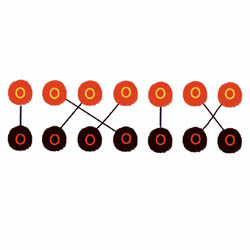
16- Lexitranslation
(span: léxitraducción ; fr: lexitraduction )
- Def.: a translation that translates each words one by one, preserving the number of words of the source-text (a.k.a a strict “word-for-word” translation).
Example. Source-text: “A thing of beauty is a joy for ever.” — Target-text: “Une chose de beauté est une joie pour toujours.”
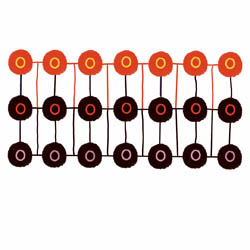
17- Syntactic translation
(span: traducción sintática ; fr: traduction homosyntaxique)
- Def.: a translation that arranges words in an order following the order of corresponding words in the source-text.
Example. See Oulipo, Atlas de littérature potentielle, Gallimard, 1981, p. 146.
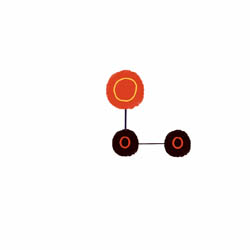
18- Echotranslation
(span: ecotraducción; fr: échotraduction)
- Def.: to repeat or stutter the syllables of words of the target-text.
Example. Source-text: “A thing of beauty is a joy for ever.” — Target-text: “Une chose de bobo-tété est une joujou-oie pour toutoujours”.

19- Onomatotranslation
(span : onomatotraducción, fr : onomatotraduction)
- Def.: to translate into onomatopoeias.
Example. Source-text: “A thing of beauty is a joy for ever.” — Target-text: “Ooooooooooooooh…”
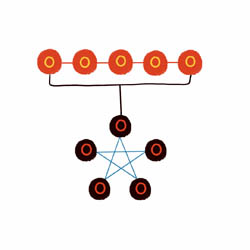
20- Anatranslation
(span: anatraducción; fr: anatraduction)
- Def.: a translation that rearranges the order of letters, phonemes, words or sentences of the target-text according to a specific formal pattern, such the palindrome, or the anagram.
Example. Source-texte :”Reír como en la Torre de Babel ! En guaraní, en Japonés!” — target-text: “We fall, as if from the Tower of Babel ! Now you speak Guaranese, and Japani”. “Fall” is a rearrangement of the phonemes “laugh” (translating “reír”), and “Guaranese, and Japani” is a rearrangement of the syllables of “Guarani and Japanese” (translating “En guaraní, en Japonés!”) (Outranspo, “Renga-O”).

20b- Grammatically extended translation
(span: traduccion gramaticale extendida; fr: traduction grammaticale étendue)
- Def.: a translation that follows the grammar (for instance the syntactical order) of a third language.
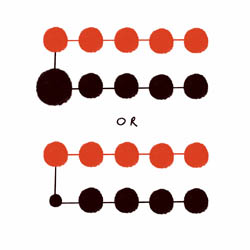
21- Determinotranslation
(span: determinotraducción; fr: déterminotraduction)
- Def.: switch from the definite to the indefinite determiner, or the other way around, or simply switch determiner.
Example. Source-text: “A thing of beauty is a joy for ever.” — Target-text: “La chose de sa beauté est toute ma joie à jamais”
Example. Source-text : “A unique verse” — Target-text : “L’averse” (Outranspo, “Renga O”).
B. Translation procedures affecting the apparatus, protocols or goals of translation
Translation procedures affecting the choice of the source-text:

22- Metatranslation
(span: metatraducción; span: métatraduction)
- Def.: the translation of a text concerned with translation.

24- Ultratranslation
(span: sultratraducción; fr: ultratraduction)
- Def.: a translation from a source-text written in a incomprehensible or unidentified language.
Translation procedures affecting the choice of the target-language(s) of the translation:
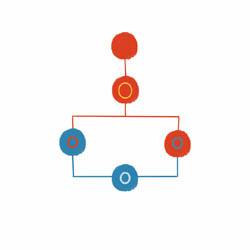
26- Neotranslation
(span: neotraducción; fr: néotraduction)
- Def.: a translation made towards a made up language, created specifically in order to make that translation.

27- Archaeotranslation
(span: arqueootraducción; fr: archéotraduction)
- Def.: to translate a text by using words which meaning is only relevant to the original as far as the old version those words are concerned.
Example. Source text: πόνος [‘pain’] — target = Arbeit [‘work’ in German, but ‘pain’ in old German] (from Hölderlin translating Sophocles, quoted in A. Berman, La Traduction et la lettre ou l’Auberge du lointain, Seuil, 1999, p. 94).
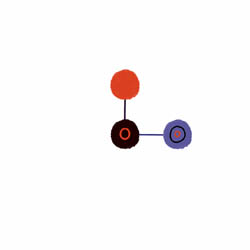
28- Dialectotranslation
(span: dialectotraducción; fr.: dialectotraduction)
- Def.: to translate a text by using words belonging to a dialectal version of the target-language.
Example. Source text: πόνος [‘pain’] — target = Arbeit [‘work’ in German, but ‘pain’ in Swabian] (from Hölderlin translating Sophocles, quoted in A. Berman, La Traduction et la lettre ou l’Auberge du lointain, Seuil, 1999, p. 94)

29- Homotranslation
(span: homotraducción; frn: homotraduction)
- Def.: a translation written towards the same language as the language of the source-text.
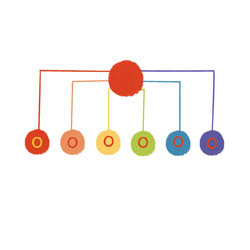
30- Polytranslation
(span: politraducción; fr: polytraduction)
- Def.: a translation towards multiple target-languages.

Intersemiotranslation
- Def.: To translate between sign systems, such as between language and dance. The prefix is taken from Roman Jakobson’s classification system.
Translation procedure affecting the conditions of production of the translation:
Concatenotranslation
(span: concatenoraducción; fr: concaténotraduction)
- Def.: when three or more translation constraints or procedures are used at the same time.

31
Example: Antotranslation + Exotranslation
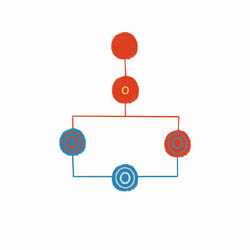
32
Example: Sound translation + Neotranslation
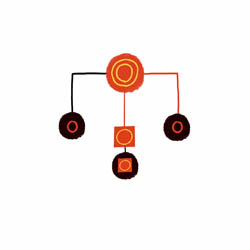
33
Example: Microtranslation + Antotranslation + Sound translation
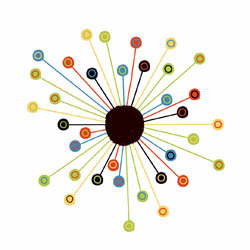
34
Example: Pluritranslation + polytranslation + heterotranslation

35- Pluritranslation
(span: pluritraducción; fr: pluritraduction)
- Def.: a translation involving more than one translator.
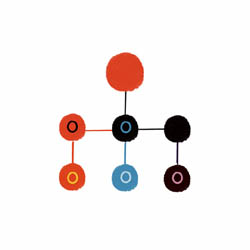
36- Autotranslation
(span: autotraduccíon; fr: autotraduction)
- Def.: a translation written by the same author as the source-text.
Cybertranslation
(span: cybertraducción; fr: cybertraduction)
- Def.: a translation that takes advantage of the capabilities and contexts provided by the stand-alone or networked computer.
Translation procedures affecting the protocols of translation:

37-Hypertranslation
(span: hipertraducción; fr: hypertraduction)
- Def.: the translation under constraints of a text written under constraints (2 different sets of constraints).

38- Multitranslation
(span: multitraducción; fr: multitraduction)
- Def.: a translation that offers multiple simultaneous options of a same word or sentence of the source-text.

39- Distranslation
(span: distraducción; fr: distraduction)
- Def.: Simultaneously producing two possible translations of a single text based on a decision forced upon you by your language pairing and editing both resulting texts side by side.
Example. Source text: “Heaven and Hell”– target-text: “Paradis et Purgatoire / Eden et Enfer”.

40- Cisotranslation
(span: cisotraducción; fr.: cisotraduction)
- Def.: Simultaneously producing two translations of a single text and editing them side by side, where the first has the constraint (in this case an S+7) enacted before translation, and the second is translated and then after the constraint (S+7) is applied. Title derived from the following breakdown: S(ource) 0 + (S+7) x trans /=/ S(ource) x trans = C(ible 1) + (S+7). Thus, the constraint is applied to both S0 & C1, (S+7) in this case. C1S0 = scissors (FR), or the split operated between the two based on order of operations (Chris Clarke).
Serial translations:
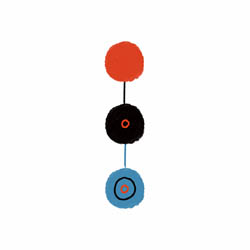
41- Retranslation
(span: retraducción ; fr: retraduction)
- Def.: the translation of a translation.

42- Retrotranslation
(span: retrotraducción; fr: rétrotraduction)
- Def.: the translation of a retranslation back into the language or the original source-text.
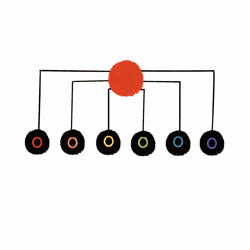
43- Heterotranslation
(span: héterotraducción; fr: hétérotraduction)
- Def.: multiple translations of the same text towards the same language by different translators.

44- Zenotranslation
(span: zenotraducción; fr: zénotraduction)
- Def.: series of retranslations where each translation in the series is half as long as the previous one.
Translation procedures affecting the expected outcomes of the translation:
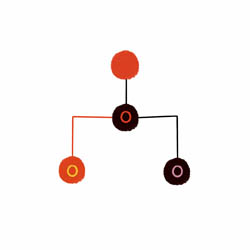
45- Pragmatranslation
(span: traducción pragmática ; fr: traduction pragmatique)
- Def.: a translation that aims at performing in the target-culture the same goal as does the source-text in its own culture.
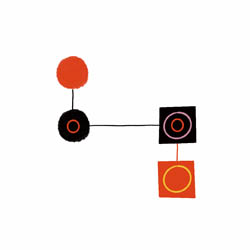
46- Countertranslation
(span: contratraducción; frn: contretraduction)
- Def.: a translation written against another translation of the same text.
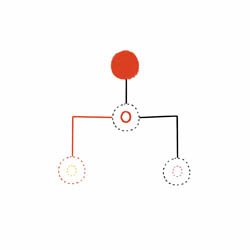
47- Quasitranslation
(span: cuasitraducción; fr: quasitraduction)
- Def.: a deliberately partial and incomplete translation, turning its imperfection into its main quality.
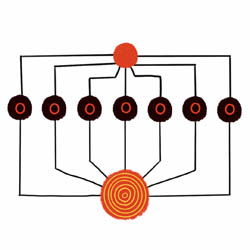
48- Omnitranslation
(span: omnitraducción; fr: omnittraduction)
- Def.: a translation that offers simultaneously all the possible meanings of the source-text.
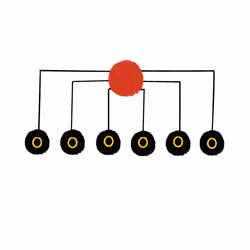
49- Isotranslation
(span: isotraducción; fr: isotraduction)
- Def.: a translation written by several translators working simultaneously, without communicating with each other, yet producing exactly the same translation.

50- Cazétranslation
(span: cazétraducción; fr: cazétraduction)
- Def.: to retranslate a text back and forth between the source-language and other languages until the final translation corresponds exactly to an existing text from a different author in the original source-language. The name of this procedures comes from Antoine Cazé, who envisioned this utopic translation procedure.

51- Tlönslation
(span: cazétraducción; fr: cazétraduction)
- Def.:

52- Perfectranslation
(span: cazétraducción; fr: cazétraduction)
- Def.:





